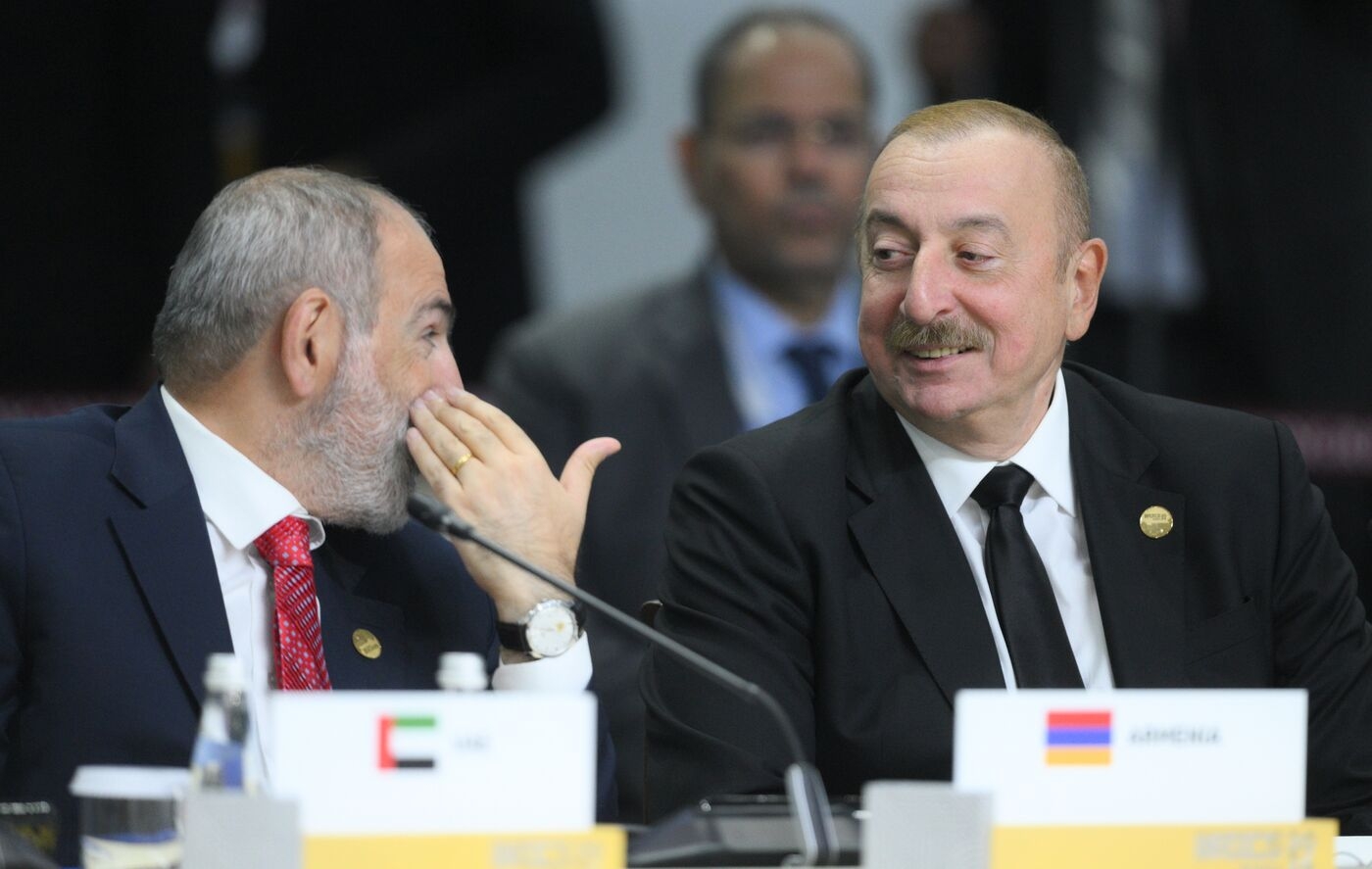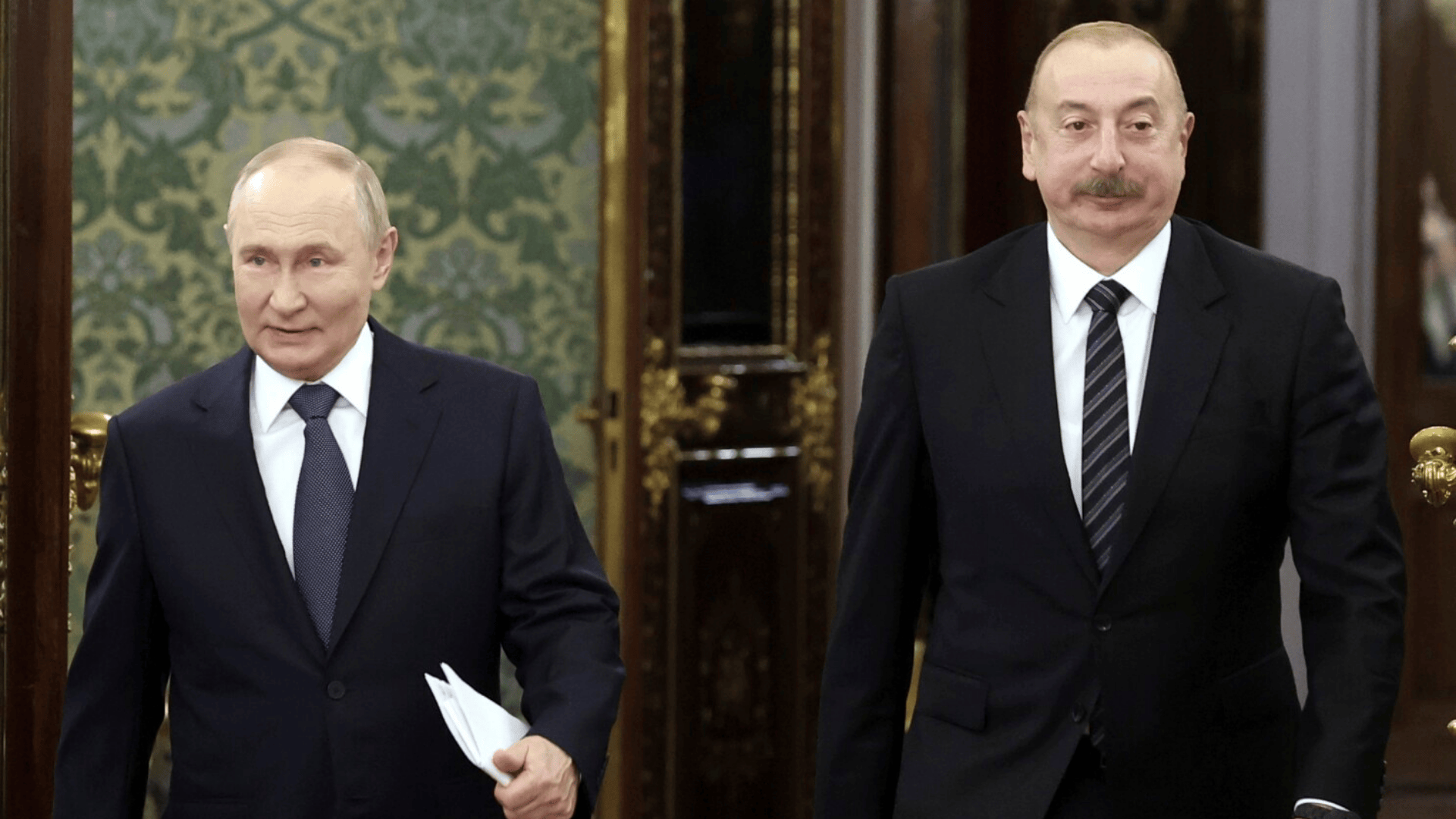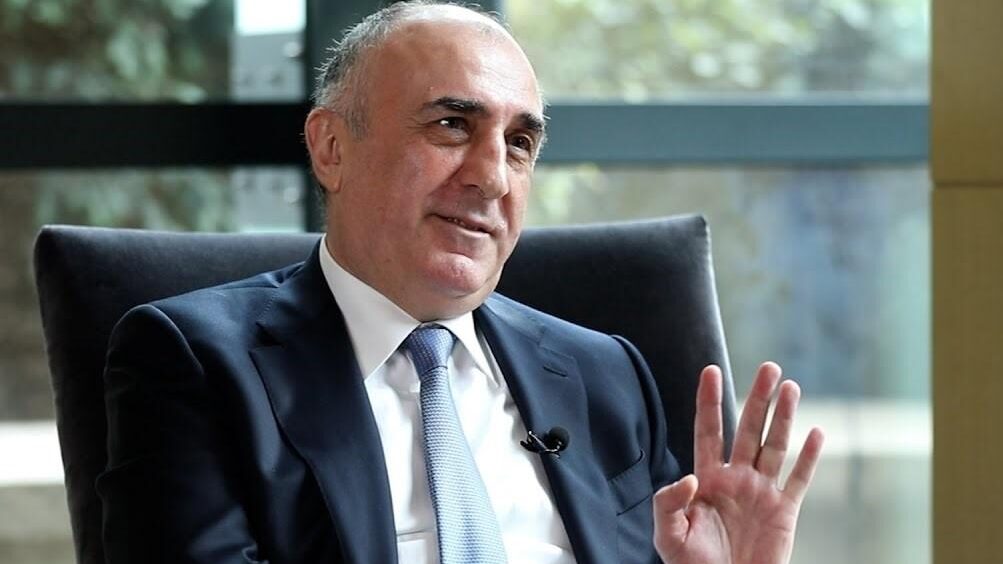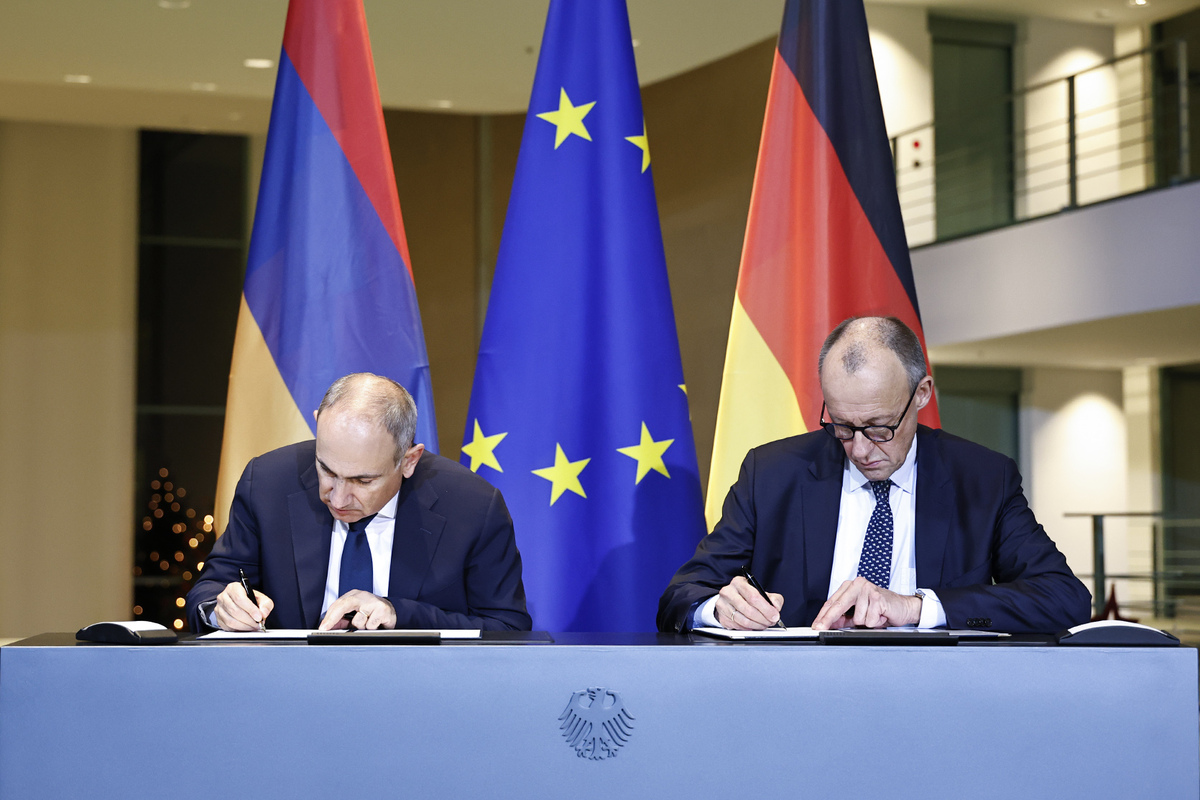Russia, Iran, China, and Trump: Intentions and prospects of the Aliyev-Pashinyan meeting in Washington — view from Baku
Aliyev–Pashinyan meeting
US President Donald Trump has announced that on August 8 he will host Azerbaijani President Ilham Aliyev and Armenian Prime Minister Nikol Pashinyan at the White House, calling it a “historic peace summit.”
The main goal of the meeting is to sign a joint declaration outlining the principles of a peace agreement between Azerbaijan and Armenia, as well as to expand economic cooperation with Washington’s support. In addition, both countries are expected to sign separate agreements with the United States aimed at strengthening bilateral cooperation and unlocking the full potential of the South Caucasus region.
Aliyev and Pashinyan have met informally several times at various international summits, but the trilateral summit in Washington will mark the first time they sit down at the negotiating table with the direct participation of the US president.
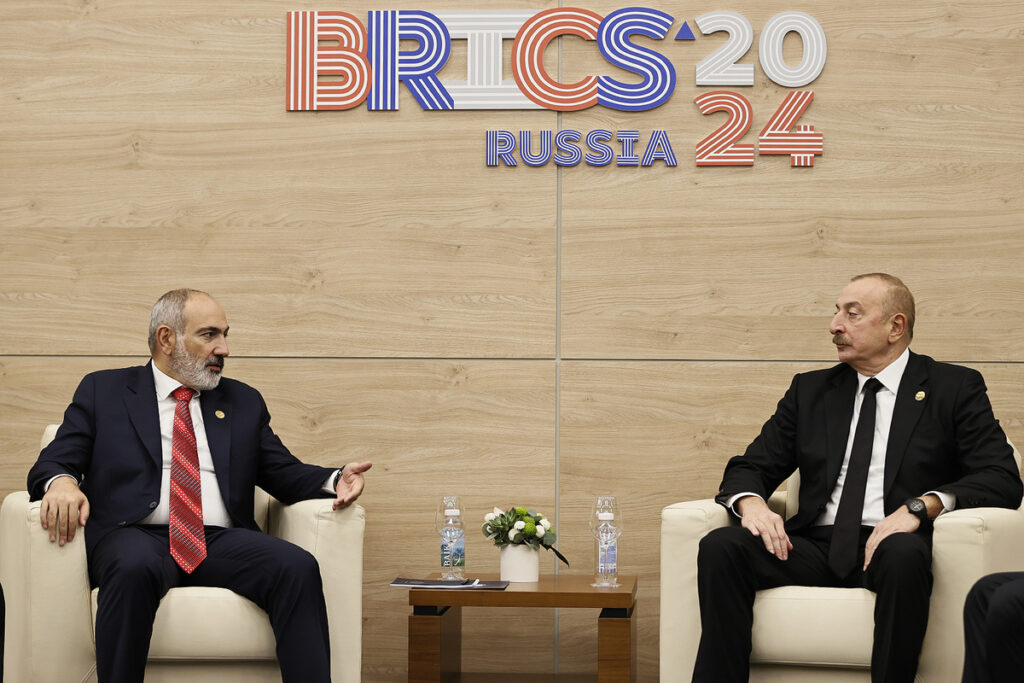
A blow to Russia’s role after its peacekeepers failed to keep the Lachin Corridor open
A decisive blow to Moscow’s image as a “reliable guarantor of the status quo” between Azerbaijan and Armenia came when Russian peacekeepers failed to keep the Lachin Corridor open at the end of 2022.
After that, the European Union – and now the United States – began playing a much more active role in peace initiatives.
For example, in May 2023, U.S. Secretary of State Antony Blinken hosted talks between the foreign ministers of the two countries in Washington, while European Council President Charles Michel held several summits in Brussels.
Now, the meeting in Washington initiated by the Trump administration underscores the West’s growing diplomatic activity in the region.
Political analysts describe this meeting as “a decisive step for the region’s future,” with its outcome potentially shaping the fate of the entire South Caucasus.
What will be agreed and signed in Washington
A full peace treaty is not expected at the Washington meeting or immediately after. However, a joint political declaration — essentially a letter of intent — is highly likely.
According to available information, this document will outline key principles: mutual recognition of each country’s territorial integrity, formal renunciation of territorial claims, mutual recognition of borders, and the opening of transport and communication links.
President Ilham Aliyev has recently said that once these principles are agreed and initialed, work on a full peace treaty can begin. The joint statement expected in Washington will serve as such a framework agreement and be seen as
a major political signal that the peace process has entered an “irreversible phase.”
Experts say the declaration will create specific obligations:
1. Armenia will have to agree to remove from its Constitution’s preamble any mention of Nagorno-Karabakh — a key demand from Baku. Pashinyan’s government has already recognized Karabakh as part of Azerbaijan and signaled readiness to amend the Constitution in the coming years.
2. Both sides will commit to ending the OSCE Minsk Group’s activities. Once a mediator in the Karabakh conflict, the group has been deemed obsolete by Baku since the 2020 war.
The Washington agreement will formally dissolve this format, handing the mediation role fully to the US and partly to the EU.
Zangezur Corridor, or Trump Route for International Peace and Prosperity (TRIPP)
One of the most difficult issues on the peace agenda remains the land connection between Azerbaijan and its Nakhchivan exclave, known as the Zangezur Corridor.
It is planned to pass through Armenia’s Syunik region (called Zangezur in Azerbaijan), and President Aliyev has long insisted that this route must be “unimpeded” – meaning Armenia should not apply border or customs controls.
Baku claims this right is enshrined in Clause 9 of the trilateral statement of November 10, 2020 (signed by Azerbaijan, Armenia, and Russia), which ended the Second Karabakh War. This clause states that “control over transport communications will be carried out by the border service of the Federal Security Service of Russia” —
implying that Russian border guards would initially monitor the corridor.
However, Armenia rejects the term “corridor,” calling it a threat to its sovereignty, and insists that all regional communications can only be opened under full Armenian territorial control. Official Yerevan firmly opposes any special extraterritorial status for the Zangezur Corridor.
A key compromise on this issue is expected to be reached at the Washington meeting.
According to leaked reports, the U.S. has proposed a compromise in which the section of road on Armenian territory would remain under Armenia’s sovereignty but be managed by an international operator.
The plan under discussion envisions transferring management to a foreign — likely American or international — company under a long-term concession. Initially, the Armenian government rejected the idea of leasing part of its territory for 99 years over sovereignty concerns. However, later statements by Prime Minister Pashinyan indirectly confirmed that the proposal is still on the table, despite sharp public criticism.
Under the expected compromise, the transit route would be developed within the framework of the “Trump Route for International Peace and Prosperity” (TRIPP) project.
According to U.S. officials, Armenia has in principle agreed to grant the U.S. exclusive rights to use and develop the land for the Zangezur Corridor for a period of 99 years. Washington would then sublease it to an international consortium tasked with building not only a highway, but also a railway, oil and gas pipelines, power lines, and fiber-optic cables.
This would create a 43-kilometer (27-mile) strategic communications corridor across Armenia, with its formal agreement expected to be signed during the Washington meeting.
The Trump administration has given it special prominence, branding it the “Trump Route for International Peace and Prosperity.”
Russia pushed out of the South Caucasus
Independent political analysts, such as Shahin Jafarli, believe the geopolitical landscape of the South Caucasus could change dramatically as a result of this agreement.
In his view, the Trump Route will deal a serious blow to Russia’s regional interests.
Russia’s presence in the region began with the Treaty of Georgievsk, signed with Georgia in 1783. Now, 240 years later, Moscow risks being pushed out of the South Caucasus altogether.
The peace process is shifting under the patronage of other imperial players — the U.S. and the EU — effectively removing the Kremlin from the equation and further weakening Russia’s influence in the region.
Analyses in leading international media also emphasize that Trump is “seizing the mediation initiative from Putin, with the West pushing Russia out of the peace process.”
An unwelcome scenario for Iran
Handing control of the new transit corridor to the U.S. is also seen as an unwelcome scenario for Iran.
According to a commentary by Intellinews prepared in Tehran, the implementation of the Zangezur route would sever Iran’s only land connection to European markets, which currently runs through Armenia.
U.S. officials have also openly acknowledged that the project would “undermine Iran’s long-term plans for a presence in the South Caucasus,” creating what Tehran sees as a “red line” situation.
Iranian officials have repeatedly warned against altering the geopolitical status quo along the Armenia–Iran border. The representative of Iran’s Supreme Leader, referring to Azerbaijan’s close ties with Israel, has stressed that “the presence of the Zionist regime in the region” poses a threat to Iran.
Tehran views the “Trump Route” as part of broader Western efforts to economically and politically isolate it. Some Iranian media even suggest that given the proposed width of the corridor (about 5–6 km), it could be more than just a transport artery — potentially becoming a wider strategic zone.
Iran is concerned that, in the future, this zone could be used for other purposes, including military ones.
Control over China’s export routes
Another likely goal of the Trump Route, in addition to countering Russia and Iran, is to gain leverage over China’s plans.
Shahin Jafarli notes that if China had intended to use the Zangezur road as part of its “Middle Corridor” initiative, this route will now fall under U.S. control.
The United States has long pursued a policy of controlling major Chinese export routes or creating alternatives to them, and the Trump Route can be seen as part of this strategy.
For example, U.S. Senator Steve Daines emphasized that TRIPP will facilitate the transport of oil and gas from the Caspian region to the West, bypassing competitors — Russia and China.
In his view, the new transport corridor created by the Trump administration will also expand the framework of the “Abraham Accords” between Israel and Arab states, bringing additional dividends to the West.
In other words, by shaping a profitable transport network in the South Caucasus, Washington serves not only local peace but also its broader global geo-economic interests.
What it means for Turkey: a victory or a new concern?
In this situation, the role of Turkey — the only Western ally in the region — deserves special attention.
The Trump Route will geographically connect Turkey directly to Azerbaijan and Central Asia, giving Ankara the long-desired land link to the “Turkic world.”
At first glance, this is a historic victory for Turkey. However, as Shakhin Jafarli notes, the fact that this connection would depend on U.S. will could cause unease in Ankara.
The Trump Route essentially sends Turkey a message: “I’m removing your two regional rivals from the game, but in return, you operate under my umbrella.”
In the near future, critical voices in Turkey may argue that the government has made excessive concessions to the U.S.
Nevertheless, Turkey is itself an important player in this process, and Turkish companies are expected to join the consortium being created and gain economic benefits from the project.
Expectations and benefits for Azerbaijan
The agreement would allow Azerbaijan to achieve several of its strategic goals.
First and foremost, Baku would finally secure unhindered land access to Nakhchivan — something it has sought for many years.
The most important condition for Azerbaijan is that there be no Armenian border or customs checkpoints along this route, so that cargo and passengers face no additional barriers.
Shahin Jafarli notes that preliminary information points to exactly such a scenario. Armenian border guards would not stop Azerbaijani vehicles or stamp documents, aligning with Baku’s vision of the Zangezur Corridor.
This would not be an extraterritorial route, but rather a special “green corridor” under international supervision.
While Baku had previously agreed to Russian control over this corridor under the 2020 agreement — and did not initially insist on U.S. involvement — the deterioration of Azerbaijan–Russia relations over the past year has changed everything.
Moscow’s inability to fulfill its trilateral commitments, along with growing trust in the Trump administration in Baku, shifted Azerbaijan’s paradigm.
Ilham Aliyev has now accepted U.S. oversight of Zangezur, apparently taking into account Washington’s security guarantees and its political-diplomatic support.
According to U.S. officials, the Trump administration is making a number of gestures toward Azerbaijan in return.
1. Suspension of Section 907 of the Freedom Support Act, which for many years restricted direct U.S. military assistance to the Azerbaijani government.
This amendment was adopted in the 1990s and prohibited official military cooperation with Baku because of the conflict. Now, in the interest of securing a peace agreement, Washington is ready to lift this restriction.
2. Withdrawal of both South Caucasus republics from the OSCE Minsk Group, something Baku has long sought.
Azerbaijan hopes the Washington Declaration will finally consign the Karabakh conflict to history.
The document will stipulate that Armenia once again confirms its recognition of Azerbaijan’s territorial integrity and Baku’s jurisdiction over Karabakh. Pashinyan has already given his political consent; in 2023–2024, the Armenian government officially declared that it recognizes Karabakh as part of Azerbaijan. Now this principle will be enshrined in a jointly signed document.
In parallel, Ilham Aliyev has stated that after the peace agreement is signed, a new era of regional cooperation will begin. According to him, if the treaty is concluded, Azerbaijan is ready to open economic and transport links with Armenia, making regional integration possible.
Only a few years ago, such a prospect seemed unlikely.
But now, Baku says it no longer views Armenia as a “hostile state” — instead, it sees a potential partner, provided Yerevan honors its commitments.
Some observers caution that Baku is not expecting dramatic results from the Washington meeting. For example, Armenian analyst Tatevik Hayrapetyan believes that for Aliyev, “the main goal is not signing a specific document, but continuing the process itself.”
In this context, it is possible that Washington will limit itself to a protocol of intentions, with the process stretching out for months to come.
And indeed, the longer the process continues, the more leverage Baku retains over Yerevan.
This approach suggests that Baku views the Washington summit primarily as a tool to advance its political objectives. Still, Azerbaijan is also interested in ensuring that the agreement does not remain just words on paper, but turns into a full-fledged peace treaty.
If peace is established, Azerbaijan could launch new economic projects in the region, establish direct trade routes with Turkey and Europe through Armenia, normalize relations with its neighbors, and attract investment under conditions of long-term stability.
Armenia’s position: benefits and risks
For Pashinyan’s government, the Washington meeting carries a mixed character.
On one hand, Armenia takes another step toward long-awaited peace and security guarantees. On the other, it is forced to make significant concessions.
Pashinyan has already stated that Armenia recognizes Azerbaijan’s territorial integrity and removes the Karabakh issue from the international agenda. Now in Washington, he is ready to officially sign a document confirming this.
Although the opposition in Armenia criticizes this move as “legalizing defeat,” Pashinyan insists that reconciliation is necessary for the country’s future.
In Yerevan, the political vocabulary has already replaced the word “enemy” with “the other side,” signaling readiness to turn a new page in the region.
Security benefits
The main advantage of the Washington agreement for Armenia could be an improved security environment. Direct U.S. involvement in the “Trump Route” project — with American companies operating on Armenian territory — offers Yerevan indirect security guarantees.
This is why Pashinyan’s office seeks to deepen the strategic partnership with Washington.
In early August, the U.S. and Armenia held joint military exercises for the first time in history, seen as a diplomatic gesture from Washington.
As Shahin Jafarli noted, if Democrats were in the White House, closer U.S.–Armenia ties might be viewed by Baku as a threat. But since the process is coordinated with the Trump administration, Azerbaijan has accepted it.
Economic opportunities
Under TRIPP, Armenian companies could join the international consortium, and local workers may be hired. Because the route will run through Armenian territory, the country could earn revenue from transit fees and taxes — potentially millions of dollars annually.
Washington also plans to sign bilateral economic agreements with Armenia, aimed at attracting U.S. investment.
This aligns with Pashinyan’s strategy of integrating with the West, reducing dependence on Russia, and pursuing a more diversified foreign policy.
Risks
The most serious risk is public and opposition perception that placing the Zangezur Corridor under international control undermines sovereignty.
Pashinyan had repeatedly promised not to allow foreign entities to perform border functions on Armenian soil. Handing over road management to the U.S. contradicts those assurances.
Some members of the ruling Civil Contract party initially called the reports “disinformation.”
There is also public concern that Armenia is “leasing its territory for 99 years.”
Analysts warn that Armenia should agree to the project only if there are reciprocal concessions — specifically, a similar Armenian transit right through Azerbaijan toward Nakhchivan or other destinations.
If only the Azerbaijan–Nakhchivan route is opened, Armenia risks remaining in a communication deadlock, with its blockade potentially worsening.
This is why Yerevan must firmly defend its own interests in Washington. As Tatevik Hayrapetyan notes,
one of the priority issues for the Armenian delegation should be securing the release of Armenian prisoners held in Azerbaijani prisons.
In addition, the Armenian side will seek a broader guarantee for the opening of all regional communications — not only the road to Nakhchivan for Azerbaijan, but also free trade routes for Armenia itself toward Azerbaijan, Turkey, and Iran.
Despite domestic protests against Pashinyan’s decisions, opposition rallies in recent months have been sluggish, while the public views the prospect of peace with cautious optimism.
However, Armenia’s parliamentary elections in 2026 lie ahead, and their outcome could directly affect the peace process.
Shahin Jafarli believes these elections will be the critical moment that determines the region’s future.
Although Pashinyan’s party still leads in the polls, its popularity has significantly declined. Pro-Russian forces are seeking to stage a political comeback.
For example, attempts by Russian billionaire Samvel Karapetyan — currently under arrest in Armenia — to form a new party are seen as part of Moscow’s plans.
The Kremlin may quietly support Pashinyan’s removal, since the success of the Washington agreement directly depends on him staying in power.
It is also possible that Iran will promote certain anti-Western narratives inside Armenia to weaken Western influence in the region.
If Pashinyan leaves office, the new leadership could revisit or delay the agreed arrangements, putting the entire peace process at risk.
News in Azerbaijan
News in Armenia
Aliyev–Pashinyan-Trump meeting











